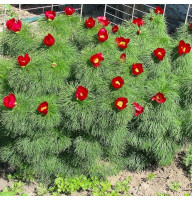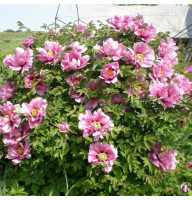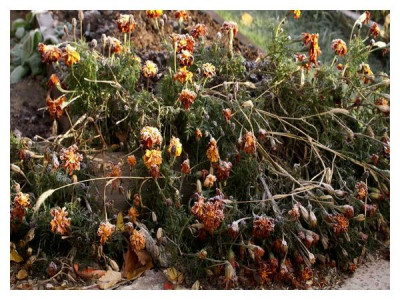Gardeners love hostas for their unpretentiousness and lush greenery. But then autumn came, their leaves turned yellow, withered and fell off. How can we help hosts prepare for winter so that they can decorate the site again in the new season? Use our tips.
Although hostas are undemanding and frost-resistant, they need careful care, especially in the autumn. In order for the plant to enter winter strong and healthy, it needs to be prepared for this. And this preparation begins during flowering.
Caring for hostas in autumn

Hostas bloom, depending on the species, both in summer and autumn. But their main advantage is their leaves. But flowers are often inconspicuous, so flowering stems are often cut off at the stage of their appearance.
But even in beautifully flowering hostas, it is recommended to cut off the faded buds along with the stems so that the plant does not waste energy on ripening the seeds.
Caring for hostas in the fall includes feeding, watering, pruning and sheltering for the winter. Until mid-September, they are also planted so that the plants grow roots before the onset of cold weather.
Feeding hostas in autumn

To prepare well for the upcoming winter, hostas need to be fertilized with phosphorus and potassium. Fertilize them with superphosphate and potassium sulfate (40 g and 30 g per 1 sq.m., respectively) or feed them with bone meal (60 g per 1 sq.m.) and ash solution (100 g of ash per bucket of water).
But nitrogen is not used in the fall, because stimulates the growth of green mass. The last time they feed the hosts is in the first half of summer.
Watering hostas in autumn
In the absence of rain in the fall, such a moisture-loving plant as hosta needs watering. She will signal this by lowering her leaves. Water it abundantly so that the roots are saturated with moisture, but as the temperature drops, gradually reduce watering until it stops completely.
When watering, try not to get it on the leaves so that the plant does not become infected with a fungal infection.
Pruning hostas in autumn

Flower growers still do not agree on the question of whether they should cut hostas in the fall or leave the leaves until spring. Opponents of pruning believe that this is a serious stress for the plant, and it will spend energy on recovery, which is why it may not survive the winter. The second argument against pruning: the leaves serve as a kind of mulch, covering the plant during the harsh seasons.
Proponents of pruning point to hosta pests that lurk in the leaves and the potential for fungal infections. In addition, the area will look well-groomed.
In general, it is better to carry out such a procedure. But this must be done before frost sets in and after the leaves turn completely yellow. Trim them with pruning shears, leaving petioles about 10 cm high. Collect the foliage and burn it to prevent pests from comfortably overwintering in it and then spreading throughout the area.
If you have hostas growing in different places at your dacha, you can experiment: cut some and not others. In the spring, compare the results of overwintering.
Regardless of whether you prune the plant or not, be sure to mulch the roots with dry peat or leaf compost. Add tobacco dust to the mulch, which repels snails, and treat with Fitosporin against fungi and bacterial infections.
Hosta shelter for the winter

Hostas are considered frost-resistant plants; for a good overwintering, it is enough to mulch them, but sometimes they also need shelter.
It is recommended to put spruce branches or dry leaves on top of the mulch in case of absence of snow and severe frosts. You can cover the hosts with a special material (spunbond, lutrasil or agrospan), which must be pressed around the perimeter with stones.
There are many other materials that are used to cover plants for the winter.
Making a shelter for hosts is not at all difficult, the main thing is not to be late with the deadlines. They need to be mulched no later than the end of September - mid-October. With the arrival of spring, remove the cover so that oxygen can flow to the plant.
Preparing your hosta for winter will not take you much time. In the spring, you won’t have to treat them or plant new ones in place of dead ones. In response to the care shown, the hostas will bloom more luxuriantly in the new season, and your flowerbed will become even more spectacular.









Write a comment